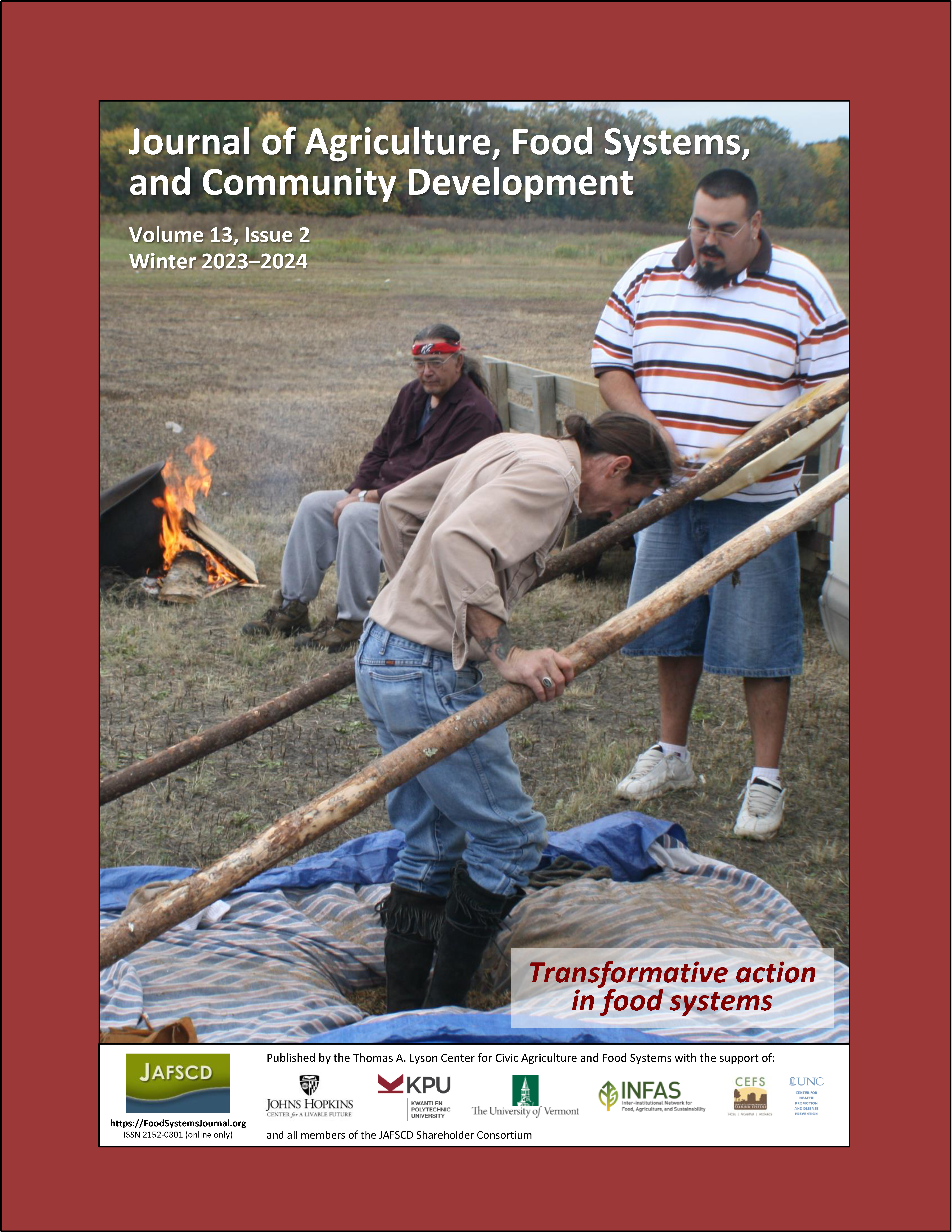Understanding the emerging phenomenon of food forestry in the Netherlands
An assemblage theory approach
DOI:
https://doi.org/10.5304/jafscd.2024.132.018
Keywords:
food forestry, assemblage thinking, participatory action researchAbstract
In the Netherlands, food forests have been appearing by the dozens since 2017, resulting in calls by Dutch national and local governments, as well as civil society organizations, for evidence of their parameters and profitability. This paper focuses on the former, mapping and analyzing food forestry (FF) in the Netherlands by drawing on assemblage theory. A survey, and unstructured interviews with five FF experts from the field, resulted in descriptive FF data as well as a map of 231 food forests. The main conclusion from the survey data from 109 participants is that food forests are incredibly diverse and versatile in terms of goal or orientation, although few initiatives focus on profitability. Some similarities include age, as most food forests were planted after 2017, and size, as most are between 0.5 and 2.5 hectares (ha), or between 1.2 and 6.2 acres. The demographics of practitioners, however, are rather homogeneous: university-educated individuals between 40 and 60 years old are the norm. Many practitioners state that the FF community at large has contributed to their access to knowledge and network, as well as their enthusiasm, sense of pride, and hope for the future regarding FF. Moreover, a shared ontological position, the distribution and exchange of knowledge, the institutionalization of FF, and infrastructural conditions both foster cohesion within the FF assemblage and embody exclusionary and disruptive processes. These complex relations confirm the importance of descriptive and contextualized evidence to support FF.
Metrics
Downloads
Published
How to Cite
Issue
Section
License
Copyright (c) 2024 Anna M. Roodhof

This work is licensed under a Creative Commons Attribution 4.0 International License.
The copyright to all content published in JAFSCD belongs to the author(s). It is licensed as CC BY 4.0. This license determines how you may reprint, copy, distribute, or otherwise share JAFSCD content.














